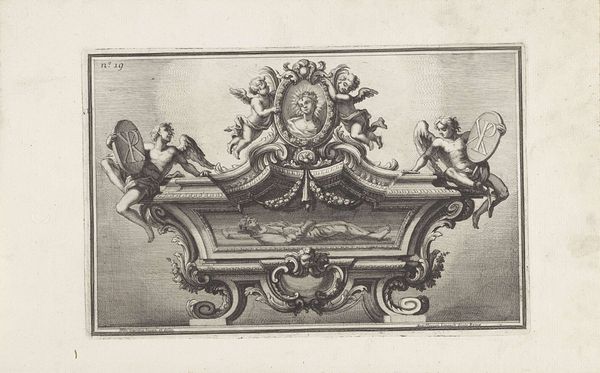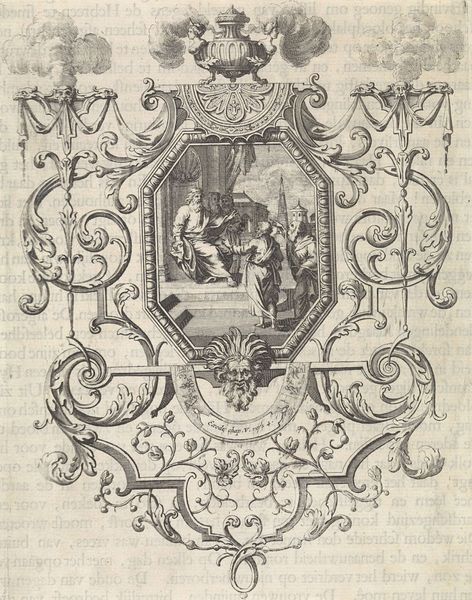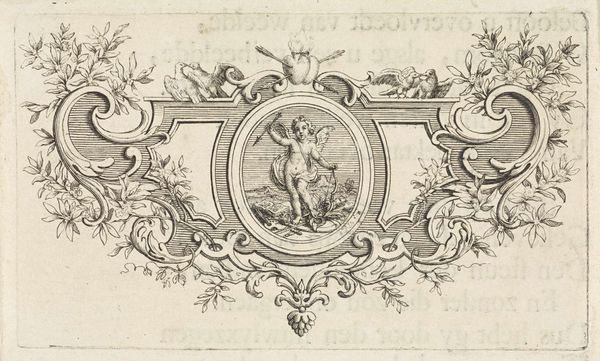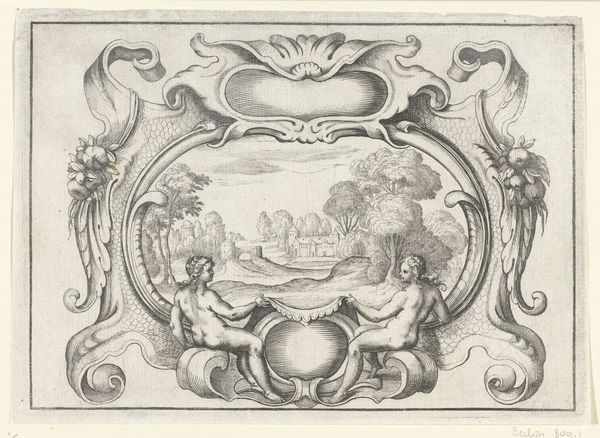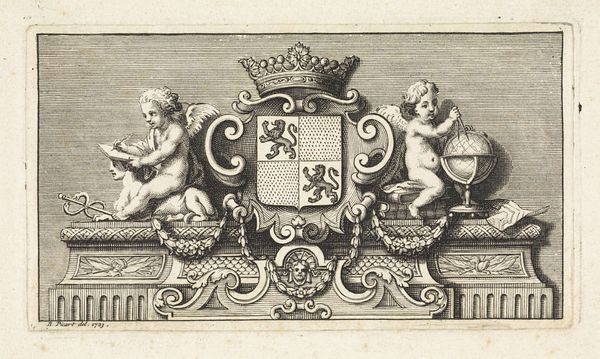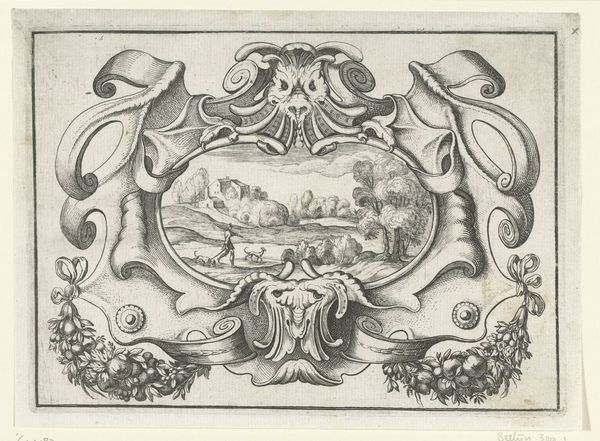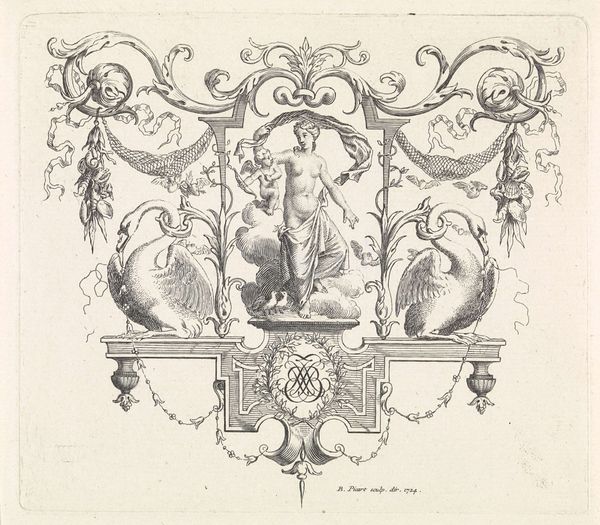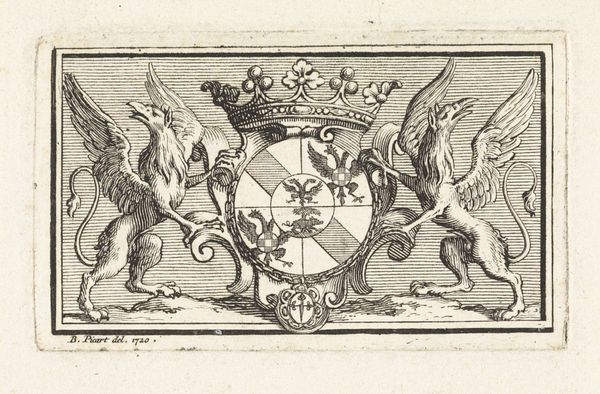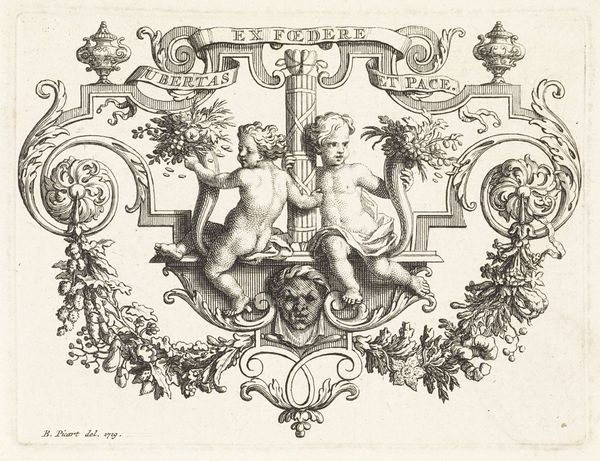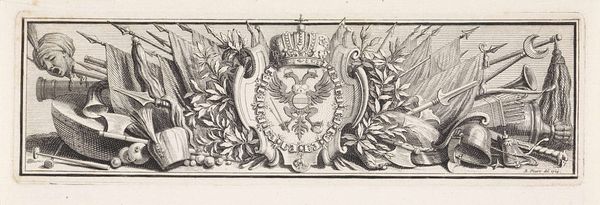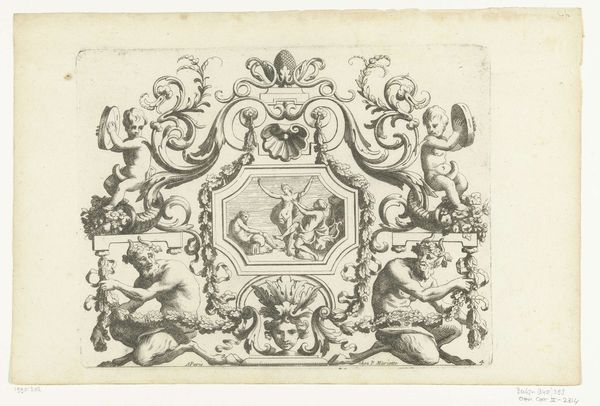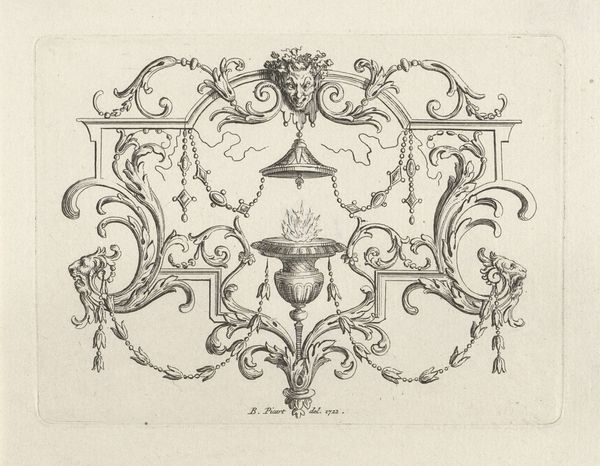
Vrouw in een medaillon geflankeerd door twee hybride wezens 1683 - 1733
0:00
0:00
bernardpicart
Rijksmuseum
print, engraving
#
portrait
#
baroque
# print
#
pen sketch
#
old engraving style
#
form
#
line
#
engraving
Dimensions: height 82 mm, width 150 mm
Copyright: Rijks Museum: Open Domain
Editor: This is "Vrouw in een medaillon geflankeerd door twee hybride wezens," or "Woman in a Medallion Flanked by Two Hybrid Creatures," a baroque engraving by Bernard Picart dating from around 1683 to 1733. It feels very ornamental... what do you see in it? Curator: I see a fascinating commentary on power and representation. The woman in the medallion, framed and idealized, is quite literally placed on a pedestal. But who is holding up that pedestal? Hybrid creatures—sphinxes, male-presenting but with decidedly subservient poses. Editor: So, you are saying it's about the people or figures in society that don't get to be the idealised figure in the oval portrait? Curator: Exactly. These figures, often marginalized, literally support the dominant image. Think about it – what societal structures allowed for this woman to be in that position of power? What labour, what oppression, what bodies are unseen but integral? Consider, too, the artist, Picart. Who was *he* serving? Editor: It makes you think about what's *not* shown. It also reminds me of, like, Instagram today, how carefully people curate their image. Curator: A direct line! And who's building that platform, maintaining the server, moderating content... often invisibly? That parallel helps us see this seemingly distant engraving as incredibly relevant. This piece can really jumpstart a conversation on social hierarchy! Editor: That’s a totally different way of looking at it than I would have on my own. It's more than just a pretty picture. Thanks. Curator: Precisely! Art can offer an entryway for exploring crucial power dynamics, both past and present, when you start looking for the unheard voices embedded within the artwork itself.
Comments
No comments
Be the first to comment and join the conversation on the ultimate creative platform.

